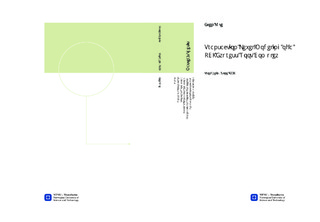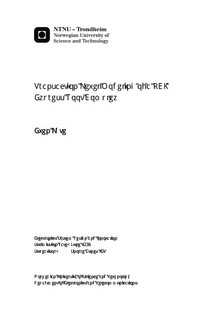| dc.contributor.advisor | Aunet, Snorre | nb_NO |
| dc.contributor.author | Låte, Even | nb_NO |
| dc.date.accessioned | 2014-12-19T13:50:09Z | |
| dc.date.accessioned | 2015-12-22T11:51:00Z | |
| dc.date.available | 2014-12-19T13:50:09Z | |
| dc.date.available | 2015-12-22T11:51:00Z | |
| dc.date.created | 2014-09-18 | nb_NO |
| dc.date.issued | 2014 | nb_NO |
| dc.identifier | 748315 | nb_NO |
| dc.identifier.uri | http://hdl.handle.net/11250/2371120 | |
| dc.description.abstract | PCI Express(PCIe) is a packet-based, serial, interconnect standard that is widely deployed within servers and workstations for it's attractive performance capabilities. A platform that has a PCIe architecture also includes a PCIe Root Complex(RC) for linking the PCIe device-tree to the host CPU and memory. During the design-phase of a PCIe endpoint-device it is highly desired to conduct computer aided simulations of the device in a relevant environment. Having a simulation software that can be applied early and iteratively in the design-phase enables engineers to tweak the product without realization of hardware. Causing a great reduction in the number of physical prototypes required before mass production.In this thesis a transaction level model(TLM) of a PCIe RC was assembled using SystemC, with a focus on latency and jitter as performance parameters. The model gives the Application Specific Integrated Circuit(ASIC) developers at Oracle a timing accurate alternative to the existing processor emulator(QEMU) that is used for the same purpose. To correlate the RC TLM with real hardware, a PCIe protocol analyzer from LeCroy was utilized. Traffic between a first generation PCIe endpoint-device and a SUN FIRE X4170 M3 server was traced. The RC TLM was made in a modular manner allowing support for other micro-architectures through insertions of trace files. The recorded traces between requests and completions were processed and inserted directly into a delay database within the RC model, to ensure high correlation between the RC TLM and the real hardware. A simple model of a PCIe endpoint-device was implemented to serve as a suitable test-environment.The functionality and the hardware realisticness of the RC model was successfully tested with targeted transaction scenarios. A simulated latency distribution of 15000 packets, proved to fit the latency distribution that was randomly drawn in the RC TLM. Only a small amount of negligible delay anomalies from imperative switch cycles were found.The PCIe RC TLM is close to optimal for modeling latency and jitter using a database of targeted trace calbrations. The principle of modeling delays in an RC TLM using latency databases, was found to be a favorable alternative to the constant delay nature of the QEMU test-environment. | nb_NO |
| dc.language | eng | nb_NO |
| dc.publisher | Institutt for elektronikk og telekommunikasjon | nb_NO |
| dc.title | Transaction Level Modeling of a PCI Express Root Complex | nb_NO |
| dc.type | Master thesis | nb_NO |
| dc.source.pagenumber | 162 | nb_NO |
| dc.contributor.department | Norges teknisk-naturvitenskapelige universitet, Fakultet for informasjonsteknologi, matematikk og elektroteknikk, Institutt for elektronikk og telekommunikasjon | nb_NO |

